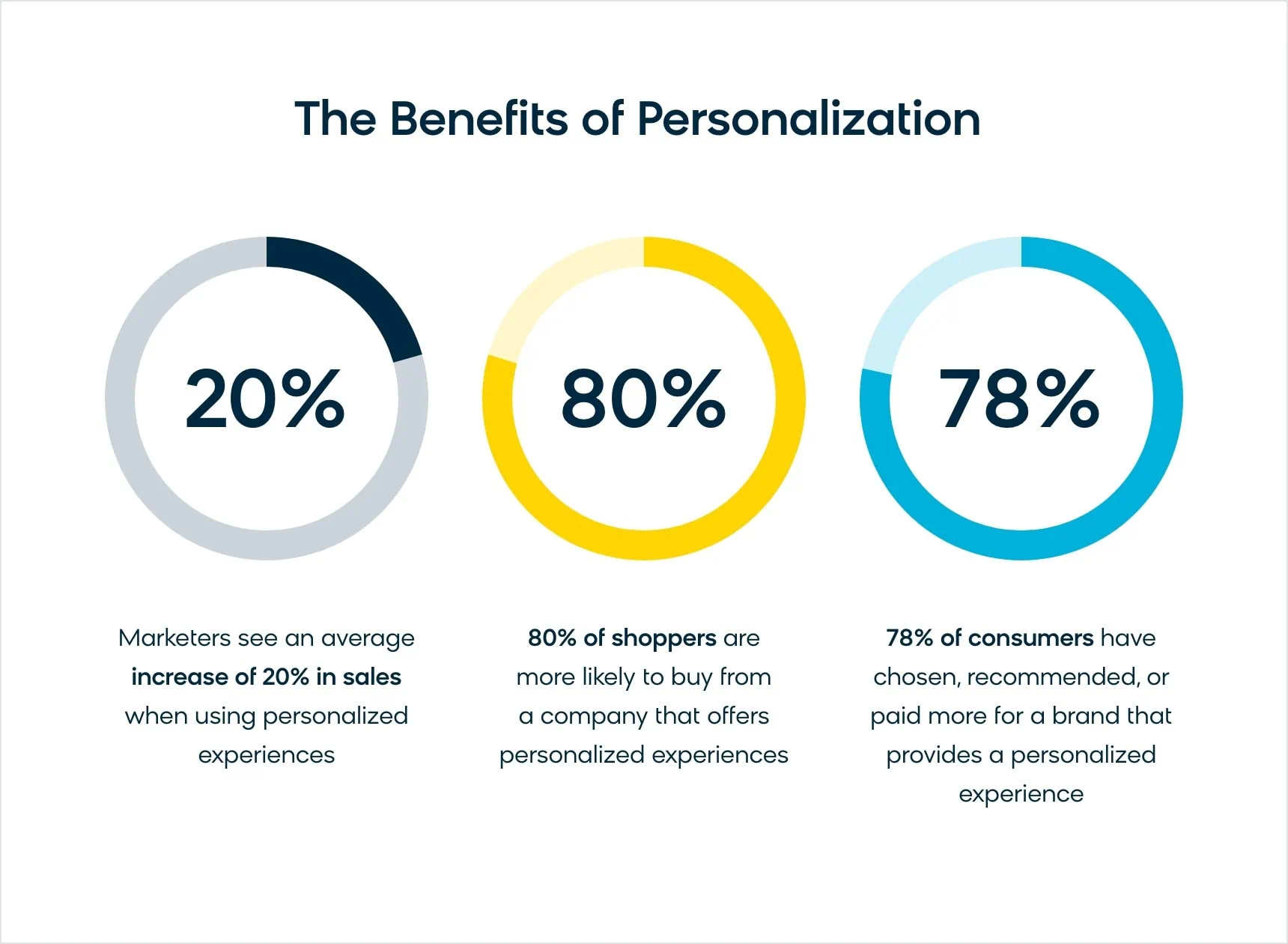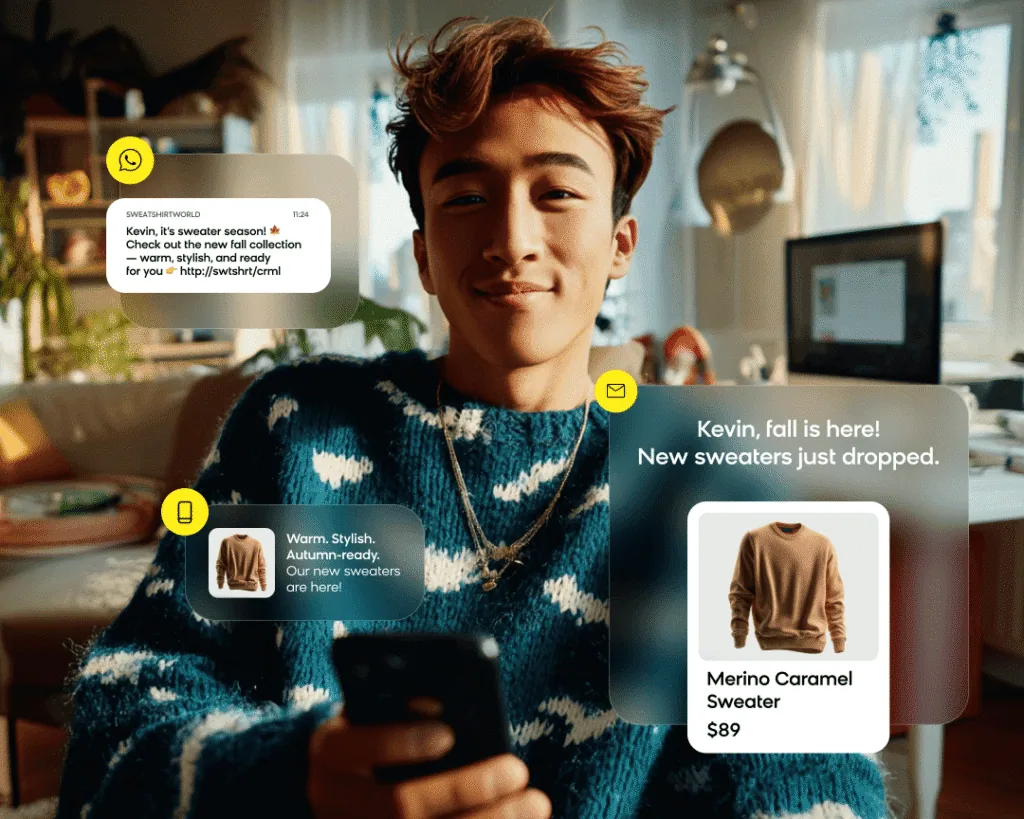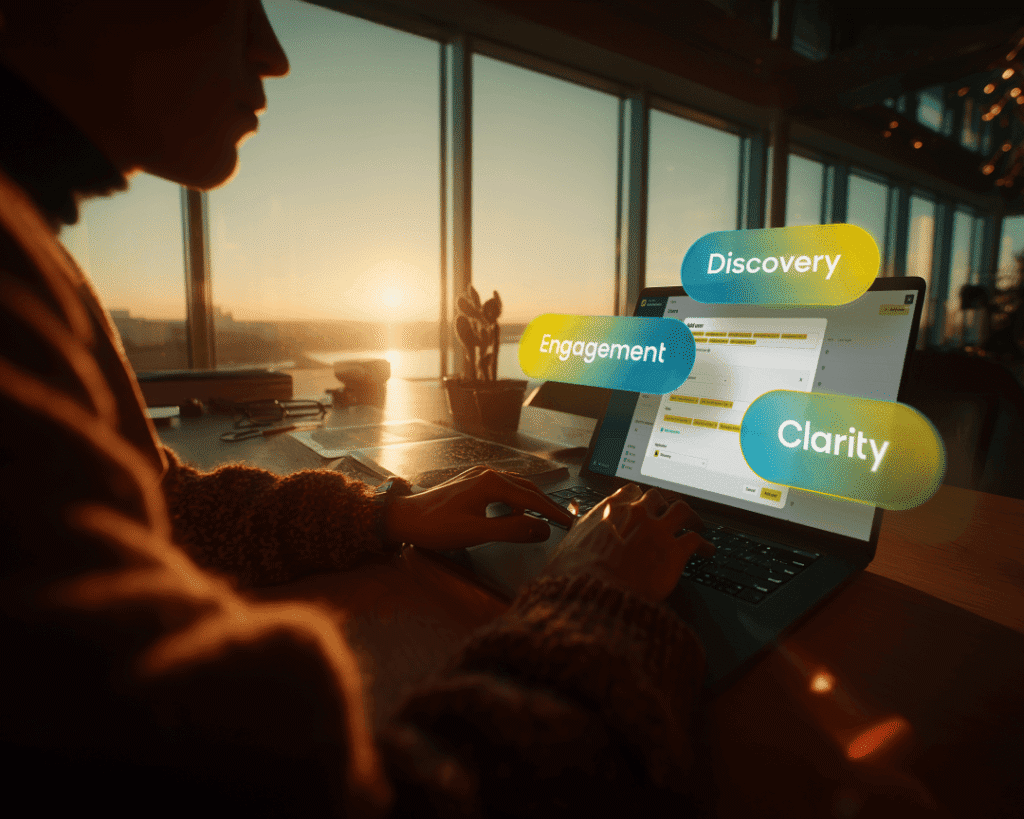Ecommerce personalization has evolved from a nice-to-have feature to a business necessity. With 81% of shoppers more likely to buy from companies offering personalized experiences, the stakes have never been higher for digital retailers.
The good news is that personalization technologies have matured significantly. The challenge now lies in selecting and implementing the right strategies from an overwhelming array of options. Different tactics, levels of personalization, and results mean that creating an effective personalized ecommerce experience requires careful planning and execution.
This comprehensive guide reveals the 7 most effective ecommerce personalization strategies that top retailers use to boost sales, complete with actionable tactics and real-world examples.
What Is Ecommerce Personalization?
Ecommerce personalization is the practice of using data to understand your customers so you can offer experiences that are so relevant and contextual, they feel like magic. Ecommerce personalization is cross-channel and is driven by real-time, first-party data. It encompasses anonymous as well as known customers and includes messages, content, site layouts, products, and more.
Personalization is increasingly important to merchants seeking to not only engage shoppers, but to also increase repeat purchases, drive sales, and increase conversion.
It comes in many different forms, from personalized AI-powered product discovery platform on a retailer’s homepage or product detail page to cart abandonment marketing campaigns and onboarding quizzes that provide a personalized showroom of items to consumers.
Before the explosion of digital commerce solutions, customers simply walked into stores and found a friendly clerk who helped them find what they wanted. Unfortunately, that kind of personal customer attention remains exceedingly rare in the digital realm.
Benefits of Personalization in Ecommerce
🔍 Consider these compelling ecommerce personalization statistics:
- Marketers see an average increase of 20% in sales when using personalized experiences.
- 80% of shoppers are more likely to buy from a company that offers personalized experiences.
- 60% of consumers say that they will likely become repeat buyers after a personalized shopping experience with a particular company.
- 76% of consumers expect companies to deliver personalized interactions, and 78% said personalized content made them more likely to repurchase.
These statistics demonstrate that personalization directly impacts key performance indicators like increased conversions, average order values, and revenue growth. The recent explosion of AI has accelerated this shift, with new tools like conversational shopping agents and generative AI-powered search intelligence becoming standard expectations.
Personalization is no longer an added bonus in the eyes of your customers—it’s a necessity. Businesses that embrace personalization at scale are positioned for long-term success in 2025 and beyond.
7 Proven Ecommerce Personalization Strategies
To help your customers achieve their goals and drive meaningful business results, here are seven proven personalization strategies that top ecommerce brands use to increase sales:
1. Dynamic Product Recommendations
Leverage machine learning algorithms to show customers products they’re most likely to purchase based on their browsing history, past purchases, and similar customer behavior.
Implementation tactics:
- Display “You Might Like…” sections on product pages
- Show “Others Also Purchased…” recommendations at checkout
- Use cross-sell suggestions in shopping cart
- Implement “Recently Viewed” product carousels
Expected results: Businesses typically see 5-25% increases in conversion rates and 10-15% improvements in average order value from AI-powered recommendation engines.
2. Behavioral Email Marketing Triggers
Set up automated email marketing campaigns triggered by specific customer actions like cart abandonment, product views, or purchase history.
Key trigger types:
- Cart abandonment sequences (recover 10-20% of abandoned carts based on industry benchmarks)
- Browse abandonment follow-ups
- Post-purchase cross-sell campaigns
- Win-back campaigns for inactive customers
- Birthday and anniversary promotions
Pro tip: Personalize email content based on individual preferences, past purchases, and browsing patterns for maximum impact.
3. Intelligent Search Personalization
Implement intelligent search functionality that considers user preferences, past behavior, and contextual factors to deliver more relevant results.
Advanced search features:
- Semantic understanding for natural language queries
- Auto-complete suggestions based on user history
- Visual search capabilities
- Voice search optimization
- Results ranking based on individual preferences
Business impact: Personalized search can increase conversion rates by 1.8x compared to generic search experiences.
4. Location-Based Content Personalization
Customize experiences based on geographic location, showing region-specific products, local store information, shipping options, and culturally relevant content.
Location-based tactics:
- Display local inventory and store locations
- Show region-specific product catalogs
- Adjust pricing for local markets
- Provide localized shipping and delivery options
- Feature culturally relevant content and promotions
5. Browse Abandonment Recovery Campaigns
Track visitor behavior and re-engage customers who viewed products but didn’t purchase through personalized retargeting campaigns and follow-up communications.
Recovery strategies:
- Email reminders featuring viewed products
- Social media retargeting ads
- On-site pop-ups for returning visitors
- SMS notifications for mobile users
- Personalized discount offers
Performance benchmark: Browse abandonment emails achieve a 34.55% open rate and 11.42% click-to-conversion rate, making them highly effective for re-engaging potential customers.
6. Customer Lifecycle Messaging
Develop targeted communication strategies for different stages of the customer journey, from welcome series for new customers to loyalty programs for repeat buyers.
Lifecycle stages to target:
- New customer onboarding sequences
- First purchase encouragement campaigns
- Repeat purchase nurturing
- VIP customer recognition programs
- Loyalty and referral campaigns
7. Real-Time Content Optimization
Use AI-powered web personalization to dynamically adjust homepage layouts, category pages, and product displays based on individual visitor behavior and preferences.
Dynamic content elements:
- Personalized homepage banners and hero images
- Customized category page layouts
- Individual product recommendations
- Tailored promotional offers
- Adaptive navigation menus
Technology requirement: This strategy requires robust customer data platforms to create a unified customer view across all touchpoints.
Advanced Personalization Tactics
Semantic Understanding for Search
The relative rarity of personalized search experiences represents a huge missed opportunity, especially since visitors using search convert at 1.8 times higher rates.
Traditional keyword-based search often fails customers. For example, if a shopper searches for “budget black laptop,” they want a black, low-cost computer—but keyword search might return low-cost black laptop accessories instead.
Intelligent search solutions:
- Semantic understanding of search intent
- Context-aware product recommendations
- Personalized auto-complete suggestions
- Visual and voice search capabilities
Read this next: Understand Your Customers’ Search Queries and Intent
Advanced Segmentation and Targeting
Effective customer segmentation goes beyond basic demographics. Modern personalization uses machine learning to identify patterns and create dynamic segments based on:
- Behavioral patterns and preferences
- Purchase history and timing
- Engagement levels across channels
- Predicted lifetime value
- Real-time intent signals
1:1 Personalization at Scale
Truly individual personalization represents the ultimate goal, requiring coordinated integration of all personalization tactics. With agentic AI capabilities, businesses can now deliver personalized experiences at unprecedented scale.
AI agents act as autonomous assistants, handling data analysis, customer segmentation, and journey orchestration in real-time.
Measuring Ecommerce Personalization ROI
Understanding return on investment from personalization efforts is crucial for demonstrating value and optimizing strategy.
Key Performance Metrics
Conversion Rate Lift: Track how personalized experiences improve conversion rates compared to generic experiences. Typical improvements range from 5-25% for well-implemented strategies.
Average Order Value Impact: Measure how personalized recommendations and targeted offers influence purchase amounts. AI recommendation engines typically increase average order value by 10-15%.
Customer Lifetime Value: Analyze how personalized experiences affect long-term customer relationships. Companies that excel at personalization generate 40% more revenue from those activities than average players.
Engagement Metrics: Monitor time on site, pages per visit, bounce rate, and click-through rates on personalized elements. Explore Bloomreach’s AI-powered analytics solutions for deeper behavioral insights.
ROI Calculation Framework
Revenue Impact = (Personalized Conversion Rate – Baseline Conversion Rate) × Traffic Volume × Average Order Value
Cost Considerations:
- Technology platform costs
- Implementation and integration expenses
- Ongoing optimization resources
- Data management infrastructure
Real-World Personalization Examples
Sur La Table: GenAI-powered Product Discovery
Kitchenware retailer Sur La Table transformed their ecommerce experience by replacing manual search and merchandising processes with GenAI-powered product discovery.
Challenge: Manual ecommerce search and merchandising tools required constant human intervention, making it difficult to help customers find products across 7,000 SKUs and limiting the team’s ability to deliver relevant experiences at scale.
Solution: With Bloomreach Discovery, Sur La Table implemented GenAI-powered site search, AI-driven product recommendations (“Similar Items” and “You May Also Like” widgets), automated merchandising optimization, and seasonal promotion management integrated seamlessly with Salesforce Commerce Cloud.
Results: Achieved 7.6% lift in search average order value, generated 3 million widget visits (1.4M to Similar Items, 1.6M to You May Also Like), and freed merchandising team from manual optimization to focus on strategic content curation and customer journey improvements.
HellermannTyton: Global B2B Personalization
As a leading cable management systems manufacturer operating in 39 countries, HellermannTyton needed to personalize experiences while harmonizing global systems.
Challenge: Legacy content management system couldn’t support ambitious personalization goals across multiple markets.
Solution: Implemented Bloomreach Content management solution with robust personalization capabilities and relevance targeting.
Results: Built foundation for global ecommerce strategy centered on personalization, successfully clustering unknown audiences and delivering persona-specific content.
My Jewellery: Zero-Party Data Innovation
Dutch retailer My Jewellery created an innovative approach to personalization while respecting customer privacy through zero-party data collection.
Innovation: Interactive style profile test that gamifies preference collection—customers simply click hearts or X’s on items to build personalized profiles.
Results: 20% higher email open rates for personalized campaigns compared to generic email campaigns, while maintaining data privacy compliance.
Read this case study: My Jewellery Gets Creative With Zero-Party Data and Bloomreach Engagement
Implementation Roadmap: Getting Started
Follow this step-by-step approach to launch your ecommerce personalization strategy:
Step 1: Define Personalization Goals Identify where personalization will have the greatest revenue impact. Focus on high-traffic, high-conversion touchpoints first.
Step 2: Audit Current Technology Assess existing tools and data sources. Identify gaps in your personalization technology stack.
Step 3: Allocate Resources Assign dedicated team members to oversee implementation and measurement. Only 50% of companies have established a personalization team with business, technical and creative expertise, making proper resource allocation crucial for success.
Step 4: Develop Long-Term Strategy Create comprehensive personalization roadmap with clear milestones and success metrics.
Step 5: Start with High-Impact Use Cases Implement proven strategies like personalized product recommendations, dynamic email content, and contextual personalization.
Step 6: Monitor and Optimize Continuously track results and optimize based on performance data.
Step 7: Scale Across Channels Once core strategies prove successful, expand personalization across all customer touchpoints.
Future of Ecommerce Personalization in 2025
The personalization landscape continues evolving rapidly, driven by advancing AI capabilities and changing consumer expectations.
Emerging trends:
- Agentic AI: Autonomous systems managing complex personalization workflows
- Conversational Commerce: AI-powered shopping assistants providing personalized guidance
- Predictive Personalization: Anticipating customer needs before they express them
- Privacy-First Approaches: Enhanced focus on zero-party and first-party data strategies, especially as third-party cookies are expected to be phased out entirely by the end of 2025
- Cross-Channel Orchestration: Seamless personalization across all touchpoints
Start Your Personalization Journey with Bloomreach
The reality is that in today’s ecommerce landscape, personalization is everything. It’s what engages customers, inspires them, and keeps them coming back. Success requires the right technology foundation and strategic approach.
Bloomreach provides everything you need to deliver next-level personalized experiences at every touchpoint. Our AI-powered platform includes:
- Autonomous search capabilities for personalized product discovery
- Conversational shopping experiences that guide customers to perfect purchases
- Autonomous marketing orchestration for real-time campaign optimization
- Comprehensive analytics for measuring personalization ROI
Ready to see what cutting-edge personalization can do for your business? Start your ecommerce personalization journey with Bloomreach today.
Ecommerce Personalization FAQs
What is the difference between personalization and customization?
Personalization uses data and AI to automatically tailor experiences based on customer behavior and preferences, while customization allows customers to manually adjust settings and preferences themselves. Personalization happens behind the scenes, while customization requires active customer participation.
How much does ecommerce personalization increase sales?
Studies consistently show that ecommerce personalization increases sales by 5-25% on average, with some businesses seeing even higher improvements. The exact impact depends on implementation quality, customer base, and the specific personalization strategies used. Marketers report an average 20% sales increase when using personalized experiences.
What data is needed for effective ecommerce personalization?
Effective personalization requires multiple data types: behavioral data (browsing patterns, purchase history, search queries), demographic information (age, location, preferences), contextual data (device type, time of visit, referral source), and preferably zero-party data directly shared by customers through surveys, quizzes, or preference centers.
How does AI improve ecommerce personalization?
AI and machine learning enhance personalization by processing vast amounts of data in real-time, identifying patterns humans might miss, predicting customer behavior, automating content optimization, and enabling truly scalable 1:1 personalization. AI can analyze customer intent and deliver relevant experiences instantly across all touchpoints.
What are the differences between B2B and B2C personalization?
B2B personalization focuses on business context—industry, company size, use cases, and account-based approaches—while B2C personalization centers on individual preferences and behavior. B2B buyers seek solutions to specific business problems, requiring personalization based on company needs and buying committee dynamics rather than personal preferences.
What are the biggest personalization challenges in 2025?
Key challenges include data privacy compliance, integrating multiple technology systems, creating unified customer views across channels, scaling personalization efforts, measuring ROI accurately, and balancing automation with human insight. Only 35% of companies say multiple teams collaborate to execute a holistic personalization strategy across digital channels, highlighting the organizational alignment challenge.
















